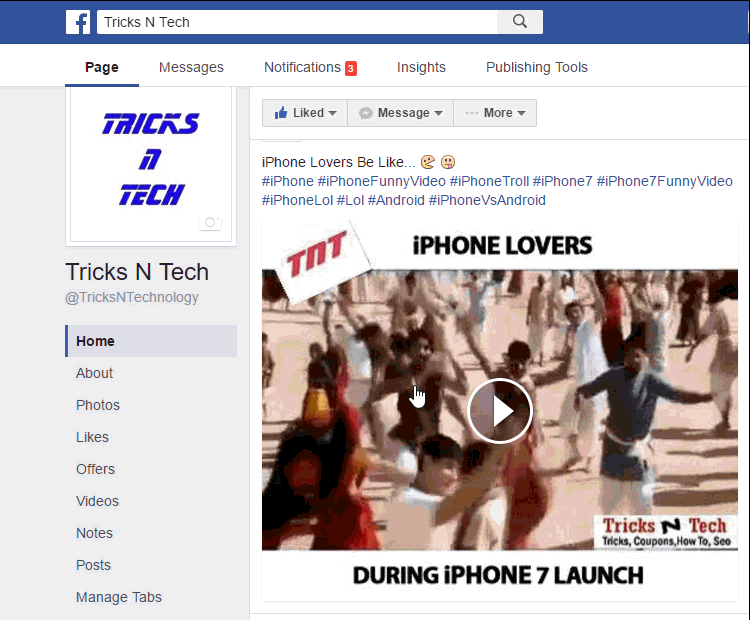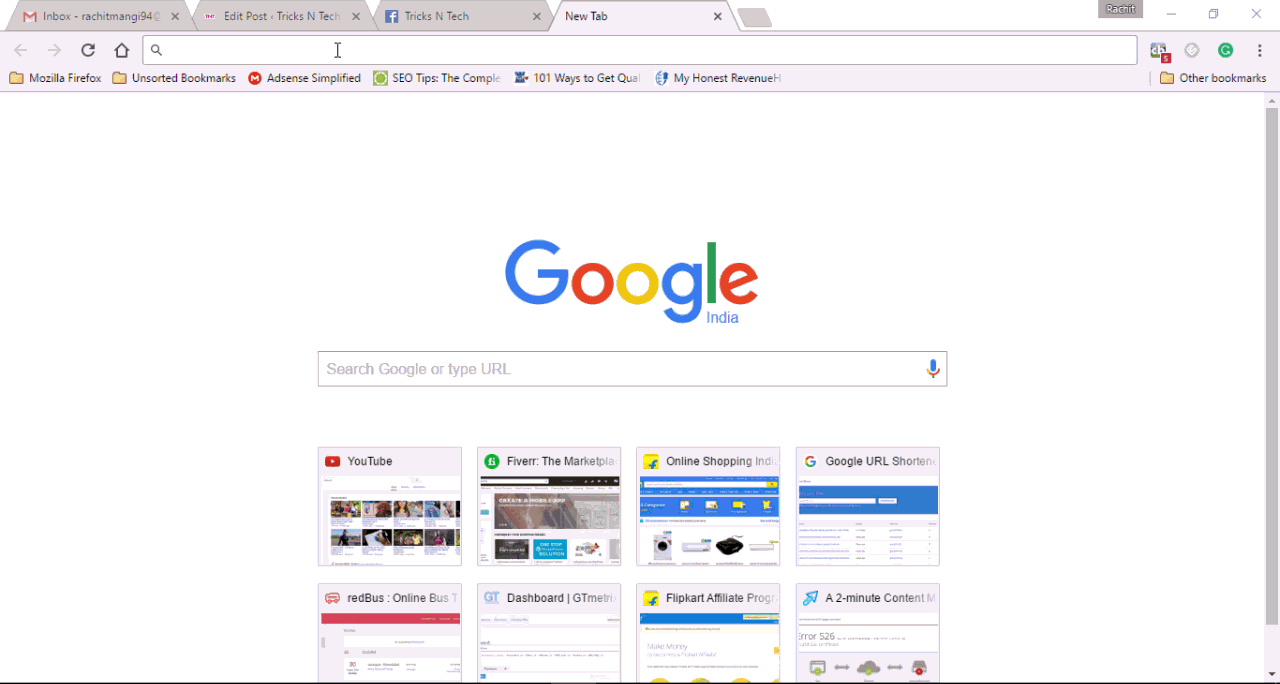Hello Trickers, You are not being able to download your favorite facebook video? Do you want to download facebook saved video in your computer, laptop or mobile? Then don’t worry about it. We are here to provide you all the best way to download facebook video. Either it is facebook video uploaded to your timeline by you or it is facebook video uploaded to the page managed by you. Either it is facebook video uploaded by someone in his timeline or facebook video uploaded to any page. We will describe all the things from starting to end.
So don’t look for How to download videos without software, how to download facebook videos to computer, how to download facebook videos chrome, how to download facebook videos online or how to download facebook videos with . We have provided the tutorial for all types of videos on how to save facebook videos, how to save facebook videos to computer, how to save fb videos to your computer, how to download videos from facebook to computer or how to download fb videos in pc.
Contents
- 1 How To Download Facebook Video Posted By You
- 2 How To Download Facebook Video Uploaded To The Page Managed By You
- 3 How To Copy URL Of Facebook Video
- 4 How To Save Facebook Video
- 5 How To Copy URL Of Facebook Saved Video
- 6 How To Download Facebook Video
- 7 How To Download Facebook Saved Video
- 8 How To Download Facebook Videos Online
How To Download Facebook Video Posted By You
If you want to download the video which was uploaded by you in the past then it is very easy. Follow the steps given below to download facebook video posted by you earlier.
Step 1: Open Facebook & go to your profile and go to your Photos / Albums.
Step 2: Open the video you want to download.
Step 3: Now click Options link under the video.
Step 4: You can see Download HD and Download SD in the Options.
Step 5: Click on the required link depending on the quality of the video you want to download.
Note: HD = High Definition & SD = Standard Definition
How To Download Facebook Video Uploaded To The Page Managed By You
If you want to download the facebook video from the facebook page that is managed by you. It means if you are admin or moderator of any page and you want to download the facebook video then follow below steps.
Step 1: Open Facebook & go to the page managed by you.
Step 2: Search & open the video that you want to download.
Step 3: In Top Left Corner you can see the Arrow like this “ ˅ ” Click on that.
Step 4: Now click on Download Video option.
How To Copy URL Of Facebook Video
Here you can see in the below gif image that how to copy URL of facebook video.
Step 1: Go to the video you want to copy url of.
Step 2: Play that video & Right click on that video.
Step 3: Now you can see the URL of the video. Now copy that URL by pressing CTRL + C.
How To Save Facebook Video
Here you can see that how to save facebook video which was posted by your friend or posted in any page. See the below image to see how to save facebook video for future use.
Step 1: Open the video you want to save for future use.
Step 2: In Top Left Corner you can see the Arrow like this “ ˅ ” Click on that.
Step 3: Now click on Save video to watch it in future.
How To Copy URL Of Facebook Saved Video
So, How can you copy URL of facebook saved video which you previously saved to watch later. Follow below steps to copy URL of facebook saved video.
Step 1: Open Saved page from your timeline.
Step 2: Now go to Videos tab.
Step 3: Choose the video from your all videos that you saved earlier.
Step 4: Now Play that video & Right click on that video.
Step 5: Now you can see the URL of the video. Now copy that URL by pressing CTRL + C.
How To Download Facebook Video
Here you will see how can we download facebook video. Follow the below steps to download the facebook video.
Step 1: Open Facebook & find the video that you want to download.
Step 2: Play that video & copy URL of the video as mentioned above.
Step 3: Open new tab & paste the URL of the video you want to download. [Don’t press Enter]
Step 4: Now change the URL in the address bar as follows – Change “www” to “m” so that your URL looks like this – “https://m.facebook.com/…” and then press Enter.
Step 5: Now you can see your video open in mobile view. Now Play that video.
Step 6: Now Right click on that video. You can see various options there. Choose “Save video as…” from the options.
Step 7: “Save As” dialog box opens. Now choose the path where you want to save the video & give the name as you want and click on “Save” button.
Step 8: Your video will be downloaded soon.
How To Download Facebook Saved Video
As mentioned above in “How To Download Facebook Video”, Same way after copying URL of Facebook Saved Video, You can Download Facebook Saved Video.
So from now don’t worry about how to download fb videos. We have given all the possible way of all the videos of facebook to download in your pc or laptop. Here best part is you don’t need any software to download facebook video. In addition, you don’t need any online software or website to download facebook videos.
How To Download Facebook Videos Online
However, We are giving you an online website to download facebook videos with just one click. So, Follow below steps:
- Open the video you want to download.
- Copy URL of the video as we mentioned above.
- Open Download Facebook Video Online website.
- Paste your video URL into the input box.
- You will see video preview now at left side.
- Now you have 2 choices to download the video either in normal version or in HD version.
- Click on the appropriate button and your video starts downloading.
- That’s it. You have successfully downloaded your favorite facebook video.
If You Have Any Problem Regarding This Then Feel Free To Comment Here.
Searches That Led To This Article – save a video from facebook, saved videos facebook, how to find saved videos on facebook, how to save videos on facebook, saving videos from facebook, how to copy a video from facebook, how to view saved videos on facebook, how do i save a video from facebook, saving facebook videos, save a facebook video, facebook video downloader chrome, download facebook live video, facebook save video, save facebook video to computer, facebook video downloader app






Great article brother!
thanks for your words. keep visiting us 🙂
Great Tutorial Love it.
Before this, I never knew that I could save FB videos…
And the GIF that you use in the tutorial added a golden touch to this guide.
Cheers.
couldn’t make it work
Please check it again. Follow steps properly. It’s working.